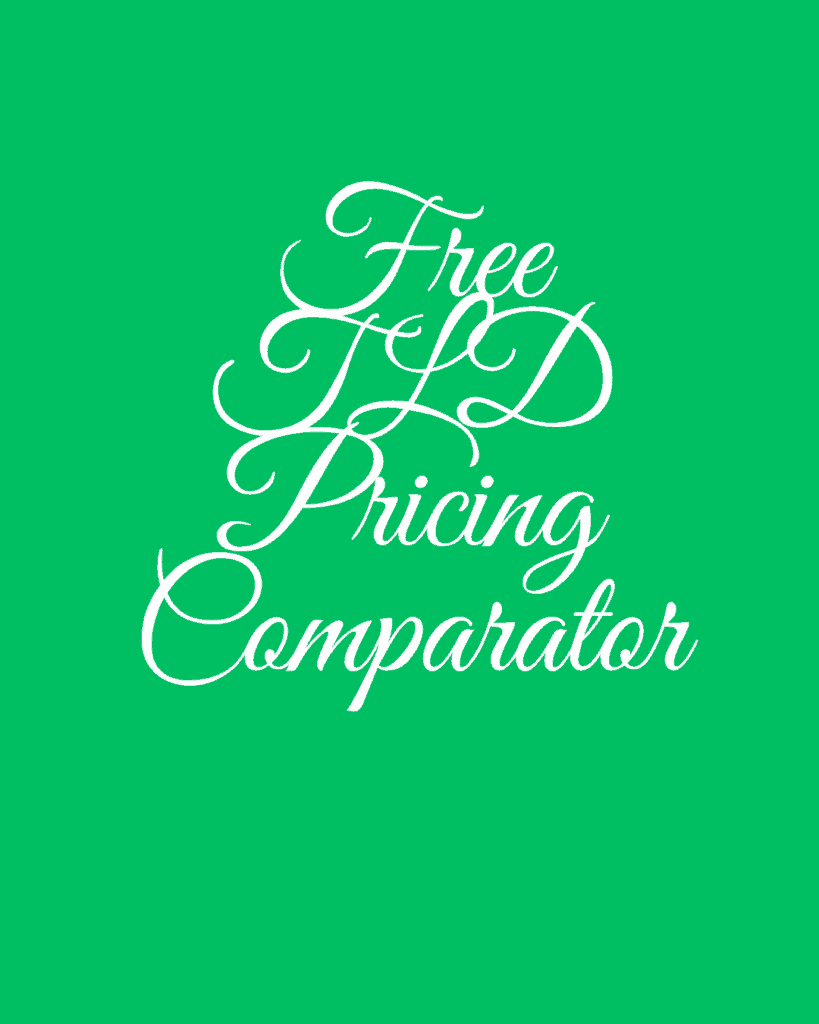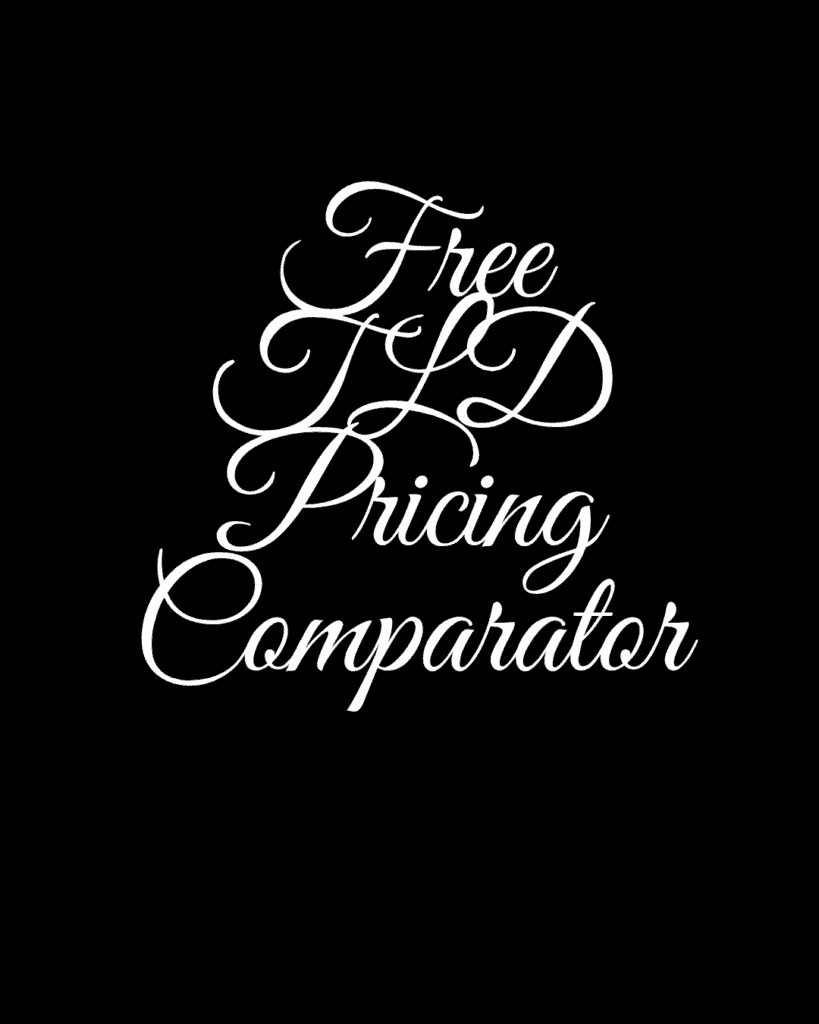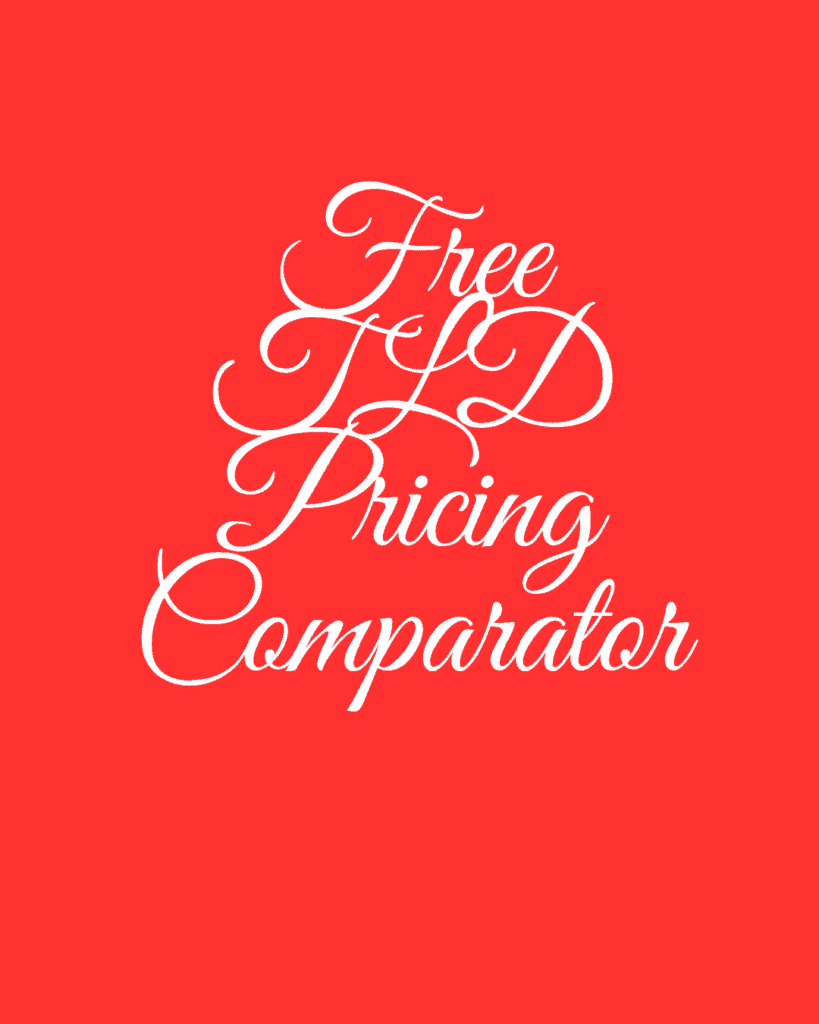TLD Pricing Comparator
| TLD | Provider | Reg. Price | Renewal | Transfer | Actions |
|---|
Free TLD Pricing Comparator
Domain names are an essential element of a website’s online presence; however, they can also be quite costly depending on factors like extension and other considerations. A name could cost thousands of dollars.

An easy way to keep domain prices affordable is using a tool that compares costs at different registrars. This will enable you to find the optimal deal and save money over time.
Domain name length
Domain length plays an essential part in the value of your domain. Shorter names tend to be more memorable and have greater brandability, which increases their worth for businesses. They are also easier to type on mobile phones, making them the better choice for users. Shorter domain names are easy to share on social media and look professional when printed on physical items such as business cards.
Domain names typically consist of up to 63 characters for labels – which is the customizable string that forms your website or brand name. The remaining portion of a domain’s TLD, or top-level domain, was introduced during the 1980s as a way of categorizing domains; popular TLDs like.com may cost more, yet can have greater brand value within niche industries.
Registries set the wholesale prices of domains, which can vary widely depending on market and TLD conditions. Popular domains have greater demand while more renowned TLDs may increase search engine rankings more effectively; however, there may be exceptions; in such instances registries may offer promotional pricing incentives to attract new customers.
Domain length can depend on several factors, including character length and TLD. While keeping it short is ideal, including keywords relevant to your business may also help drive more traffic and boost rankings in search results. Just be mindful not to overcrowd your domain with keywords as this could lower its ranking on search engines.
Although character limits don’t play as crucial a role anymore in domain name valuation and usability, they still influence its value and utility. With more people using smartphones, shorter domain names will become easier for them to remember and type. Furthermore, shorter domains tend to be easier read on mobile devices, which makes sharing them with colleagues or friends much simpler.
Top-level domains
Domain names are unique identifiers used to distinguish websites on the internet. They appear after the dot in an address’s final part and act like the end cap for that website’s domain address. Top-level domains (TLDs), are organized into groups based on purpose and ownership – choosing an ideal TLD can give your business an edge against rival businesses.
Generic TLDs (gTLDs) are among the most familiar and widely-used domain extensions, available to anyone without restrictions as to who may register them – these domains include com, net, org and gov. Sponsored TLDs are created specifically for specific communities, industries or interests and administered by organizations that monitor eligibility requirements; examples of sponsored TLDs include.aero museum and pro.

Top-level domains (TLDs) can also be classified based on their geographic location. Country code TLDs (ccTLDs), for instance, signal to users that websites relevant to their local community have been identified – something which businesses who wish to connect with customers in certain regions might find particularly helpful.
Top-level domains (TLDs) not only shape user perception, but they can also have a significant effect on search engine optimization (SEO). For example, selecting a TLD associated with spammy behavior could harm SEO rankings; similarly a difficult to pronounce or remember TLD may make it more challenging for visitors to locate your website online.
Consider your business’s future goals when selecting a TLD. For instance, if your aim is to expand into other countries or regions, selecting an innocuous domain name could help prevent you from having to change and redirect all traffic at a later time – costly domain name changes that take months to recover traffic are best avoided by purchasing generic TLDs first and later adding specific ones as needed for growth – thus saving time and money by not having to rebrand later on!
Registrars
Domain names are unique website addresses that identify specific webpages on the internet, with associated costs like registration and renewal fees as well as add-on services like email hosting or security certificates. While registrars set their own prices, competition and consumer demand help keep costs in check – making it important for you to understand how pricing structures will impact how much you ultimately spend over time.
Registrars are authorized by ICANN to sell and manage domain names, registering new Top Level Domains (TLDs), providing access to registered domains information, offering other services like SSL certificates, web hosting and DNS management; some offer their services free while others charge a yearly fee.

When purchasing a domain, it is wise to conduct thorough research across multiple registrars in order to find the cheapest price and ensure you are receiving maximum value from your investment. A comparison tool can help you to quickly assess both new domain registration costs as well as renewal or transfer charges – and provides pricing details for over 3000 TLDs!
Initial and renewal prices of domains differ depending on which registrar you purchase from. Some registrars charge more for TLDs that are similar, so be sure to compare prices before making a decision. In addition, certain registrars charge extra fees for services like privacy or web hosting which could significantly increase your costs for domain registration and renewal.
Domain pricing depends on many variables, including its length and desirability. Shorter domains tend to be more desirable and can often cost more. Domains featuring keywords or industry-specific terms tend to cost more. Furthermore, TLD recognition plays a factor in domain pricing.
ICANN does not regulate the prices of new TLD options such as.club,.shop and.news wholesalers set their own prices according to supply and demand; this has led to significant price variations across domains. Furthermore, two-letter country TLD registries can set their own prices.
Pricing
Domain prices depend on various factors, including popularity of an extension and keywords it contains; top-level domain (TLD) determines its purpose or origin; popular extensions like.com tend to cost the most while more specific themes and requirements can make their registration much cheaper; these may include sponsored TLDs with strict registration criteria as well as country-specific TLDs like.us for United States registration.
Pricing depends heavily on length; shorter domain names tend to be more desirable and therefore typically more costly than their longer counterparts. Your domain registrar also plays a part, since some might try upselling you unnecessary services; it is crucial that you choose one with transparent pricing structures and clearly separated add-ons.